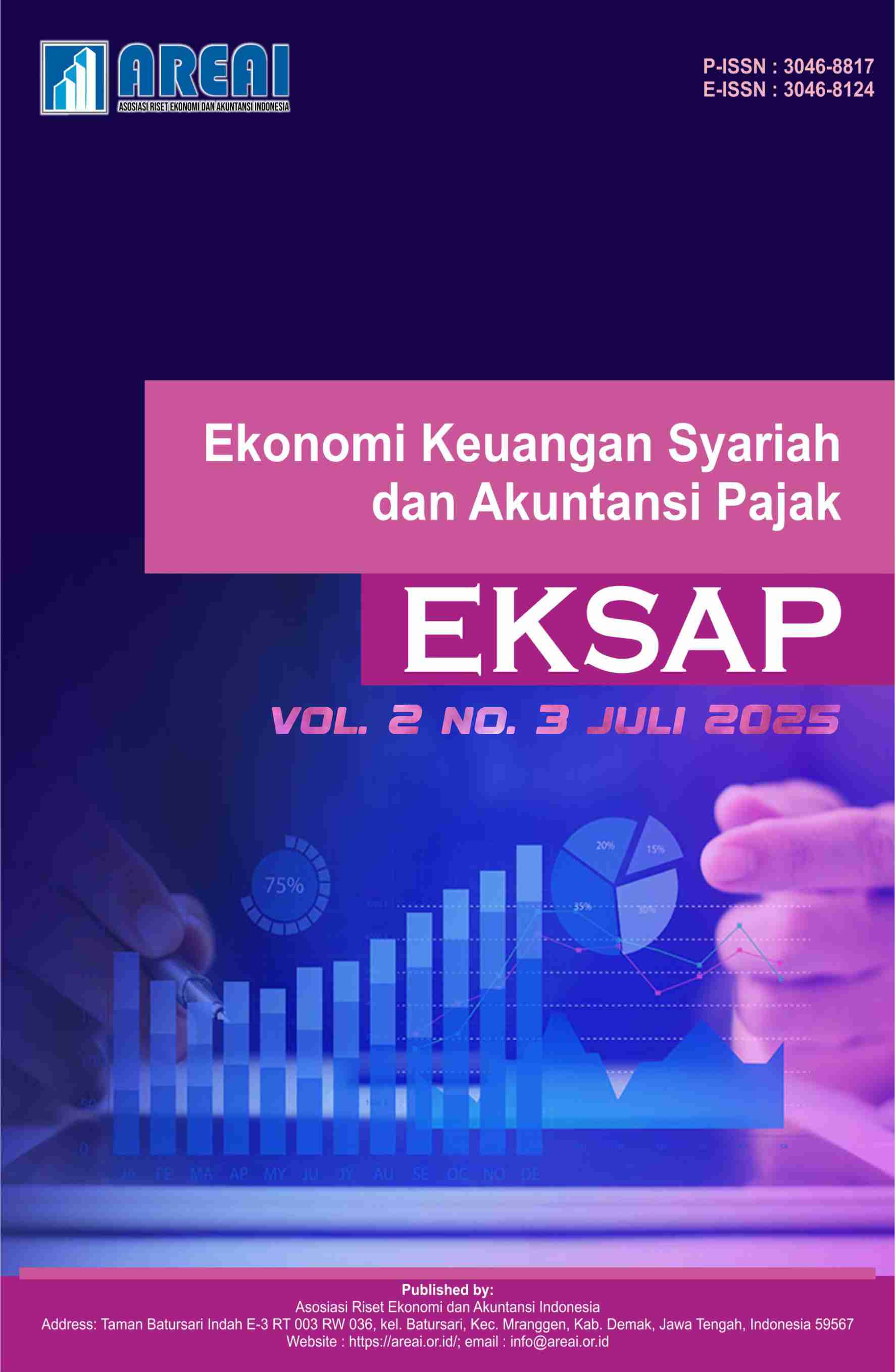Tindak Pidana Korupsi Melalui Pencucian Uang dengan Memanipulasi Laporan Keuangan
DOI:
https://doi.org/10.61132/eksap.v2i3.1265Keywords:
corruption, money laundering, financial statement manipulation, forensic accountingAbstract
Corruption in Indonesia has evolved into a complex phenomenon, often involving money laundering and financial statement manipulation as mechanisms to conceal illicit assets within seemingly legal financial systems. This study focuses on the bribery case involving the Regent of Kepulauan Meranti as the research object, aiming to trace the flow of funds, financial manipulation techniques, and the involvement of both individual and corporate actors. The objective of this research is to analyze the interconnection between corruption, money laundering, and financial statement fraud, and to examine the legal implications of the criminal charges applied within Indonesia’s penal system. This study adopts a qualitative approach using a case study method, with primary data drawn from official documents issued by the Corruption Eradication Commission (KPK) and secondary data from credible media sources. The findings reveal that the corruption scheme was systematically carried out by disguising illegal funds through property investments and business entities. The study also highlights the insufficient application of cumulative charges and emphasizes the need for regulatory enhancement, particularly concerning illicit enrichment provisions. This research underscores the urgency of reforming supervision systems, penal structures, and strengthening the role of forensic accounting in detecting and preventing organized financial crimes in the public sector.
Downloads
References
Basith, A. W. (2021). Penggabungan perkara tindak pidana korupsi dan tindak pidana pencucian uang dalam kasus hukum di Indonesia. Sintaksis, 1(3), 23–31.
Cassara, J. A. (2020). Money laundering and illicit financial flows: Following the money and value trails. Independently published.
Crumbley, D. L., Heitger, L. E., & Smith, G. S. (2019). Forensic and investigative accounting (9th ed.). Commerce Clearing House.
Esther, J. (2020). Rekonstruksi sistem pemidanaan tindak pidana korupsi dan pencucian uang dalam pendanaan pemilihan umum. Jurnal Hukum Samudra Keadilan, 15(1), 151–170.
Hamzah, A. (2012). Pemberantasan korupsi melalui hukum pidana nasional dan internasional. RajaGrafindo Persada.
Hopwood, W. S., Leiner, J. J., & Young, G. R. (2021). Forensic accounting (2nd ed.). McGraw-Hill Education.
Jessica, J. (2021). Tindak pidana pencucian uang yang dilakukan oleh korporasi: Studi kasus putusan Pengadilan Negeri Nomor: 64/PID.Sus/TPK/2016/PN.BGL. Jurnal Hukum & Pembangunan, 51(4), 927–951.
Kariana, I. M. G. (2024). Penjatuhan pidana nihil dalam tindak pidana korupsi dan pencucian uang. Lex LATA, 6(2).
Klitgaard, R. (2001). Controlling corruption. University of California Press.
Mustari, R. (2023). Analisis hukum penerapan undang-undang tindak pidana pencucian uang dalam penanganan tindak pidana korupsi. Clavia, 21(1), 181–195.
Nurhidayati, N., Nugraha, S., Siskawati, E., Reslawati, R., & Luhgiatno, L. (2023). Budaya korupsi dan kebijakan pemberantasan tindak pidana pencucian uang (money laundering). Morality: Jurnal Ilmu Hukum, 9(1), 94–110.
Putra, Y. B. T. (2024). Kewenangan Komisi Pemberantasan Korupsi dalam penuntutan tindak pidana pencucian uang. Jurnal Rechtens, 13(2), 181–198.
Putri, N. N., & Katimin, R. H. (2021). Urgensi pengaturan illicit enrichment dalam upaya pemberantasan tindak pidana korupsi dan tindak pidana pencucian uang di Indonesia. Jurnal Ilmiah Galuh Justisi, 9(1), 38–61.
Rahmatillah, V. N. (2024). Perbarengan tindak pidana korupsi suap dan tindak pidana pencucian uang (Studi Putusan Pengadilan Negeri Banjarmasin No. 6/Pid.Sus-TPK/2022/PN Bjm). Lex Positivis, 2(7), 893–926.
Ritonga, R. F. (2024). Tinjauan hukum pidana terhadap manipulasi laporan keuangan PT Asabri sebagai perbuatan fraud. Journal Equity of Law and Governance, 4(2), 316–326.
Romney, M. B., & Steinbart, P. J. (2015). Accounting information systems (13th ed.). Pearson.
Silverstone, H., & Sheetz, M. (2020). Forensic accounting and fraud investigation for non-experts (3rd ed.). Wiley.
Singleton, T. W., Singleton, A. J., Bologna, G. J., & Lindquist, R. J. (2006). Fraud auditing and forensic accounting. John Wiley & Sons.
Sjahdeini, S. R. (2007). Pencucian uang dan pembiayaan terorisme. Pustaka Utama.
Tuanakotta, T. M. (2013). Audit berbasis ISA (International Standards on Auditing). Salemba Empat.
Tucker, O. M. (2022). The flow of illicit funds: A case study approach to anti–money laundering compliance. Georgetown University Press.
Wells, J. T. (2021). Corporate fraud handbook: Prevention and detection (6th ed.). Wiley.
Downloads
Published
How to Cite
Issue
Section
License
Copyright (c) 2025 Ekonomi Keuangan Syariah dan Akuntansi Pajak

This work is licensed under a Creative Commons Attribution-ShareAlike 4.0 International License.





